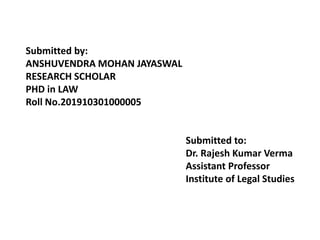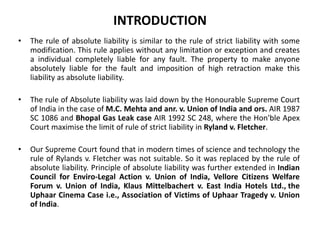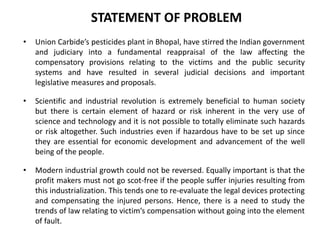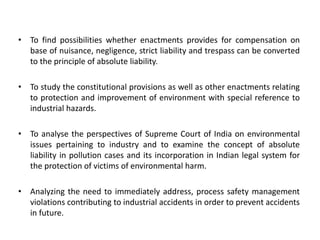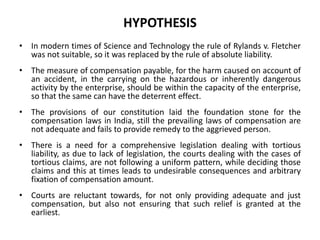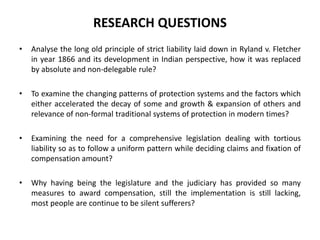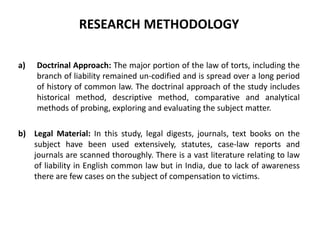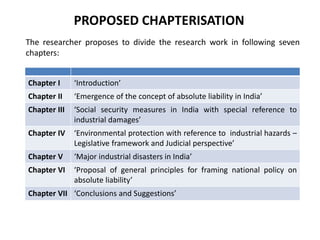This document provides an introduction and synopsis of a research paper titled "AN ABSOLUTE LIABILITY IN INDIA WITH SPECIAL REFERENCE TO INDUSTRIAL DAMAGES." It discusses the rule of absolute liability established by the Supreme Court of India, compensation laws and statutes in India, issues related to industrial hazards and toxic waste, and aims to analyze the need for absolute liability in India with respect to industrial damages through comparative study and evaluation of judicial decisions and legal frameworks. The document outlines several hypotheses related to replacing the rule of strict liability with absolute liability, adequacy of compensation laws, need for consolidation of social security laws, and lack of implementation and monitoring of safety measures in industries.

